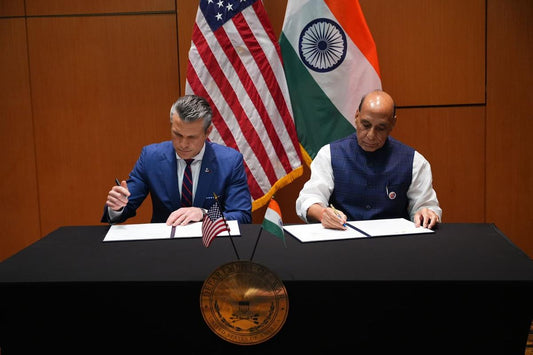IAS Officer Salary and Benefits Overview: Career Growth Prospects and Challenges

Within India's governmental framework, few roles are as prestigious and influential as that of an Indian Administrative Service (IAS) officer. These officers are instrumental in executing government policies, overseeing public administration, and maintaining law and order throughout the nation. For those pursuing a career in civil service, the IAS offers not only a promising professional path but also competitive salaries, comprehensive benefits, and substantial opportunities for career advancement. This in-depth look at the salaries, benefits, and career growth prospects of IAS officers highlights why this position is more than just a job—it is a vocation that impacts millions of lives.
Historical Context
The inception of civil service in India can be traced back to the British era, with the establishment of the Indian Civil Service (ICS) for governance. Following India's independence in 1947, the Indian Administrative Service replaced the ICS as part of the effort to rebrand governance with a focus on democratic values. The IAS emerged as a symbol of meritocracy, ensuring continuity in administration while empowering Indians to assume administrative duties. Over the years, the role of the IAS has evolved, but it remains a crucial component of India's governance, reflective of the country's growing complexities and challenges.
The Significance of IAS Officers
IAS officers hold significant influence over public policy and administration. Their functions range from enforcing laws to fostering economic development and ensuring public welfare. As representatives of the government across various levels, they interact with citizens and stakeholders directly. The significant responsibilities and powers attached to the IAS positions are matched by a corresponding level of remuneration and benefits, making this career one of the most coveted in India.
IAS Officer Salary Structure in 2025
For the year 2025, the salary framework for IAS officers is structured with clear pay scales that increase with rank and experience. The hierarchical pay structure is detailed below:
| Rank/Designation | Pay Level | Basic Pay (₹) | Approx. Total Salary (₹) |
|---|---|---|---|
| Junior Scale (Sub-Divisional Magistrate) | 10 | 56,100 | 80,000 - 1,00,000 |
| Senior Scale (Additional District Magistrate) | 11 | 67,700 | 1,00,000 - 1,30,000 |
| Junior Administrative Grade (Deputy Secretary) | 12 | 78,800 | 1,30,000 - 1,50,000 |
| Selection Grade (Director) | 13 | 1,18,500 | 1,50,000 - 1,80,000 |
| Super Time Scale (Joint Secretary) | 14 | 1,44,200 | 1,80,000 - 2,20,000 |
| Above Super Time Scale (Additional Secretary) | 15 | 1,82,200 | 2,20,000 - 2,50,000 |
| Apex Scale (Secretary) | 17 | 2,25,000 | 2,50,000+ |
| Cabinet Secretary | 18 | 2,50,000 | 2,80,000+ |
The basic pay for IAS officers ranges from ₹56,100 per month at the Junior Scale level to ₹2,50,000 for the Cabinet Secretary. When allowances are included, the total monthly salary can vary from approximately ₹80,000 to over ₹2,80,000, a substantial amount for public service roles.
Components of Salary: Basic Pay and Allowances
- Basic Pay: This is the fixed portion of an IAS officer's salary.
- Dearness Allowance (DA): Adjusted biannually, this allowance counteracts inflation to maintain the purchasing power of the officers. As of 2025, it can significantly increase the total take-home salary.
- House Rent Allowance (HRA): Varies based on the posting location, with rates up to 24% of the basic pay in metro areas, aiding in housing costs.
- Travel Allowance (TA): Covers expenses for official travel and relocations, critical given the nature of their roles.
- Other Perks: Benefits include government accommodation, official vehicles, medical facilities, pensions, and retirement benefits, contributing significantly to the compensation package. Special allowances may also be granted based on posting and duties.
Benefits of Being an IAS Officer
IAS officers enjoy various benefits that extend beyond financial remuneration, enhancing their quality of life and work experience:
- Job Security: As part of the government, IAS officers have a high degree of job security, unlike many roles in the private sector.
- Pension Scheme: Post-retirement, a pension ensures long-term financial security, making it an appealing career.
- Medical Facilities: Officers and their families have access to extensive healthcare, reducing medical expenses.
- Employee Welfare Schemes: Various schemes support the well-being of IAS officers.
- Career Development Programs: Regular training and development opportunities keep officers updated on administrative practices and policy changes.
Career Growth and Promotions in IAS
The career progression for IAS officers is well-defined, merit-based, and steeped in tradition, generally following a hierarchical structure based on rank and years of service. Below is a typical timeline for an IAS officer's career:
| Years of Service | Typical Rank/Post |
|---|---|
| 1 – 4 | Sub-Divisional Magistrate/Assistant Secretary |
| 5 – 8 | Additional District Magistrate/Under Secretary |
| 9 – 12 | District Magistrate/Deputy Secretary |
| 13 – 16 | Director/Special Secretary |
| 16 – 24 | Joint Secretary/Divisional Commissioner |
| 25 – 30 | Additional Secretary/Principal Secretary |
| 30 – 33 | Additional Chief Secretary |
| 34 – 36 | Chief Secretary/Secretary |
| 37+ | Cabinet Secretary (Highest rank) |
Promotions in the IAS depend on merit, seniority, and the availability of higher-ranking positions. Regular evaluations and performance assessments are pivotal in determining an officer's advancement potential.
Responsibilities by Rank
The responsibilities of IAS officers vary greatly depending on their rank:
- Junior Scale Officers (Sub-Divisional Magistrates): They oversee sub-district administration, ensuring law and order, land revenue administration, and community welfare.
- District Magistrates: As district administration heads, they manage development programs, law enforcement, and public services, playing an essential role in local governance.
- Joint Secretaries and Above: Tasked with leading departments, they focus on policy formulation, implementation, and inter-departmental coordination at both state and central levels.
- Cabinet Secretary: As the highest bureaucratic position, the Cabinet Secretary acts as the administrative head of the Government of India, coordinating ministry activities, ensuring policy execution, and advising the Prime Minister.
Challenges Faced by IAS Officers
Despite the allure of an IAS career, it comes with challenges requiring resilience and determination:
- Workload and Pressure: Often overwhelming, the job may entail long hours and stressful situations such as natural calamities or public unrest.
- Political Interference: Navigating administrative duties while considering political dynamics can complicate decision-making.
- Public Scrutiny: Constantly under public and media scrutiny, officers must maintain transparency and accountability.
- Change Management: Officers must adapt to societal changes, technological advancements, and policy reforms.
Solutions to Challenges
Addressing these challenges involves implementing several measures:
- Institutional Support: Developing support systems within government agencies can help manage crises and alleviate stress.
- Training Programs: Ongoing training equips officers with modern administrative skills for better adaptability.
- Public Communication Strategies: Effective communication fosters trust and reduces public scrutiny, enhancing transparency.
- Emphasis on Work-life Balance: Promoting realistic workloads can prevent burnout and support mental health.
Future Trends and Predictions
As India advances into a digitally transformative era, the role of IAS officers is expected to evolve. Future trends include:
- Digital Governance: There will be a strong focus on e-governance for improved service delivery, necessitating technological adaptation by officers.
- Public Sector Innovation: Emerging paradigms in citizen engagement and welfare will require officers to adapt to innovative service models.
- Interdisciplinary Roles: Diverse educational backgrounds will offer fresh perspectives and opportunities in IAS.
- Global Perspectives: A global outlook among younger IAS entrants will shape policies addressing both local and international issues.
Conclusion
The Indian Administrative Service represents a significant opportunity in India's governance, providing a structured salary, extensive benefits, and clear career advancement paths. While challenges exist, solutions and future trends present promising avenues for those aspiring to enter public service. The IAS is not merely a career choice; it is a noble vocation dedicated to serving the nation.
For those considering this career path, staying informed and prepared is crucial. Resources like SSBCrack and SSBCrackExams offer study materials, online courses, and eBooks to assist aspiring civil servants on this distinguished journey.



















